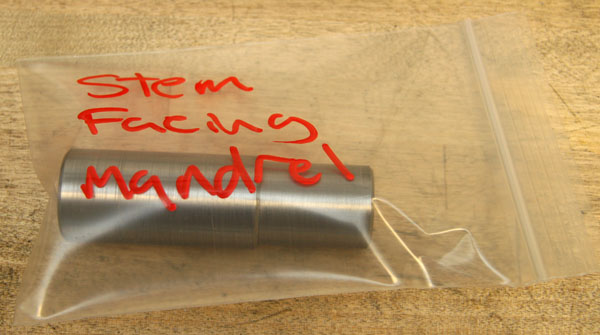Difference between revisions of "Stem Preparation"
(→Why) |
(→Why) |
||
| Line 1: | Line 1: | ||
===Why=== | ===Why=== | ||
| − | Threadless headset systems require a nice sqare face to push against for proper function. Rarely is a cast or fabricated stem faced with any usable precision. You must do this yourself. Machined stems rarely require this treatement. | + | Threadless headset systems require a nice sqare face to push against for proper function. This is important for well engineered systems that use the Dia-Compe patent, but absolutely critical if using a poorly designed Chris King headset. |
| + | |||
| + | Rarely is a cast or fabricated stem faced with any usable precision. The price point just doesn't justify it. You must do this yourself. Machined stems rarely require this treatement. | ||
===How=== | ===How=== | ||
Revision as of 02:10, 5 May 2007
Why
Threadless headset systems require a nice sqare face to push against for proper function. This is important for well engineered systems that use the Dia-Compe patent, but absolutely critical if using a poorly designed Chris King headset.
Rarely is a cast or fabricated stem faced with any usable precision. The price point just doesn't justify it. You must do this yourself. Machined stems rarely require this treatement.
How
A simple madrel is made to fit a 1" collet and the 1.125" stem. I prefre to do all work with a collet if I can.
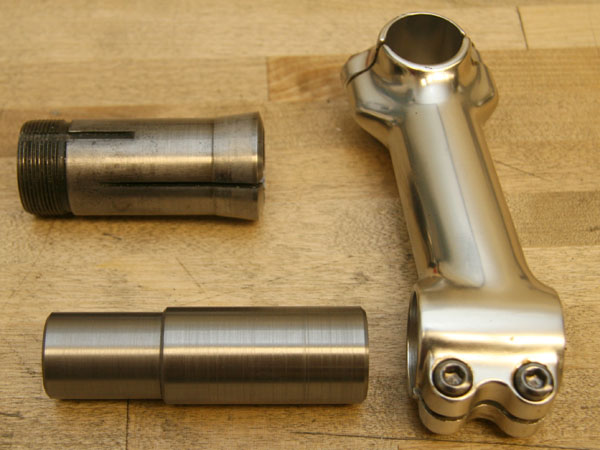
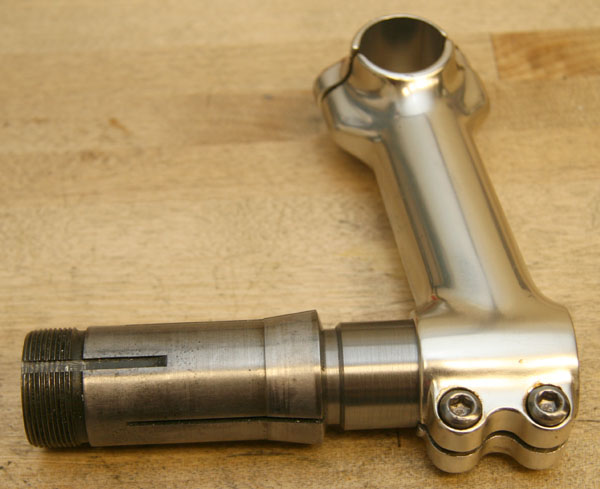
Very carefully spin the stem on the lathe. Take as little metal off as needed to get a nice face.
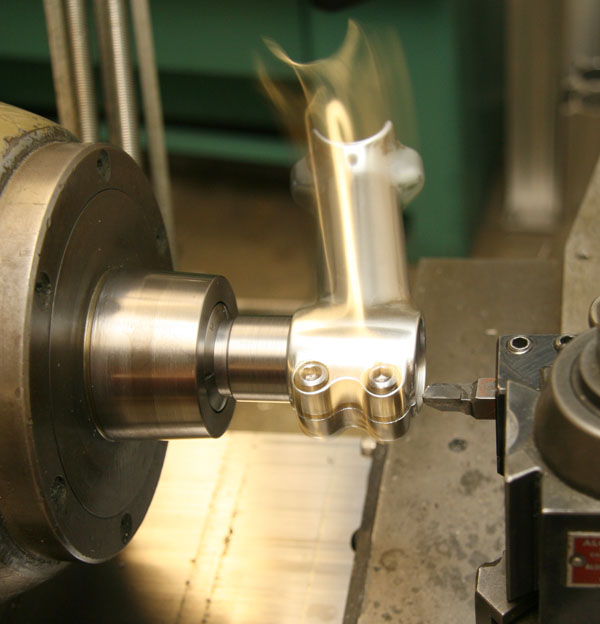
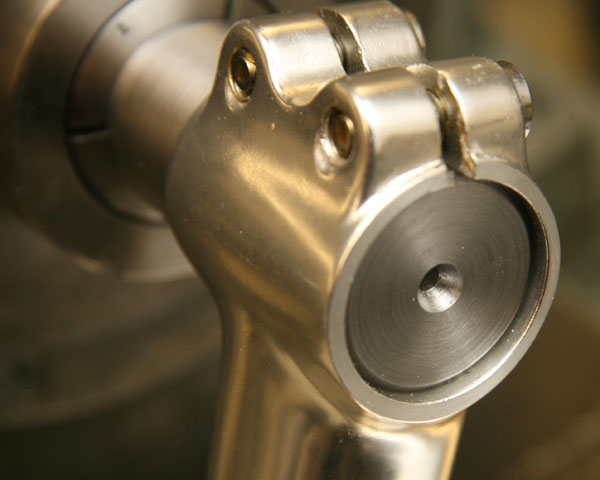
Always bag and lable specially made tools. Years later the tool will be clean, in good shape, and clearly marked.
